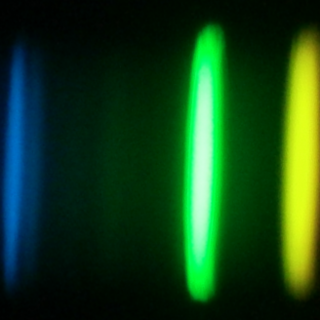Bibcode
Fernández-Alvar, E.; Carigi, Leticia; Schuster, William J.; Hayes, Christian R.; Ávila-Vergara, Nancy; Majewski, Steve R.; Allende Prieto, C.; Beers, Timothy C.; Sánchez, Sebastián F.; Zamora, O.; García-Hernández, D. A.; Tang, Baitian; Fernández-Trincado, José G.; Tissera, Patricia; Geisler, Douglas; Villanova, Sandro
Bibliographical reference
The Astrophysical Journal, Volume 852, Issue 1, article id. 50, 12 pp. (2018).
Advertised on:
1
2018
Journal
Citations
64
Refereed citations
59
Description
The formation processes that led to the current Galactic stellar halo
are still under debate. Previous studies have provided evidence for
different stellar populations in terms of elemental abundances and
kinematics, pointing to different chemical and star formation histories
(SFHs). In the present work, we explore, over a broader range in
metallicity (-2.2< [{Fe}/{{H}}]< +0.5), the two stellar
populations detected in the first paper of this series from metal-poor
stars in DR13 of the Apache Point Observatory Galactic Evolution
Experiment (APOGEE). We aim to infer signatures of the initial mass
function (IMF) and the SFH from the two α-to-iron versus iron
abundance chemical trends for the most APOGEE-reliable α-elements
(O, Mg, Si, and Ca). Using simple chemical-evolution models, we infer
the upper mass limit (M up) for the IMF and the star
formation rate, and its duration for each population. Compared with the
low-α population, we obtain a more intense and longer-lived SFH,
and a top-heavier IMF for the high-α population.
Related projects

Nucleosynthesis and molecular processes in the late stages of Stellar Evolution
Low- to intermediate-mass (M < 8 solar masses, Ms) stars represent the majority of stars in the Cosmos. They finish their lives on the Asymptotic Giant Branch (AGB) - just before they form planetary nebulae (PNe) - where they experience complex nucleosynthetic and molecular processes. AGB stars are important contributors to the enrichment of the
Domingo Aníbal
García Hernández

Chemical Abundances in Stars
Stellar spectroscopy allows us to determine the properties and chemical compositions of stars. From this information for stars of different ages in the Milky Way, it is possible to reconstruct the chemical evolution of the Galaxy, as well as the origin of the elements heavier than boron, created mainly in stellar interiors. It is also possible to
Carlos
Allende Prieto